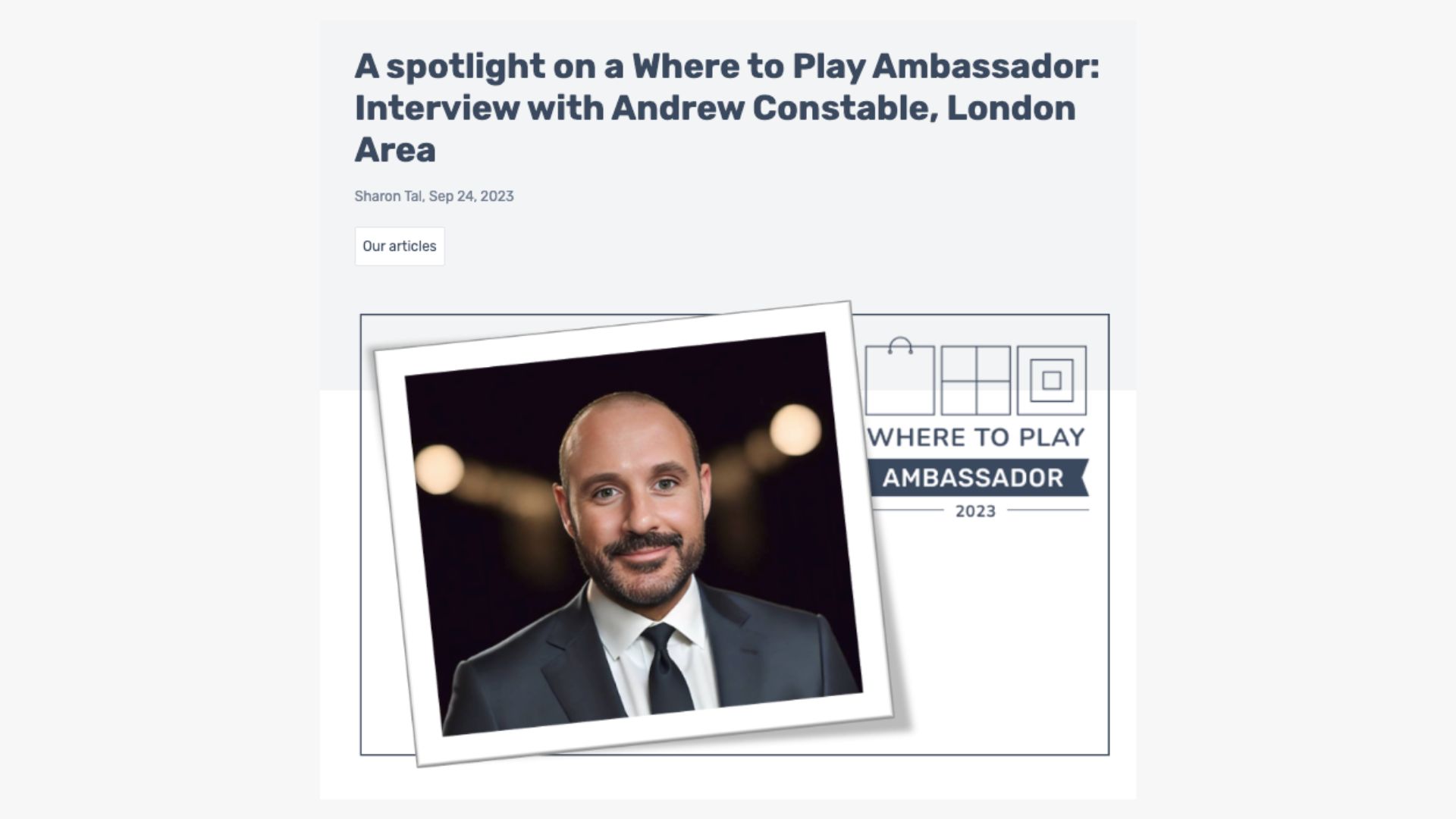Sep27

Our local ambassadors are highly qualified Where to Play experts that are fully supported by us to train and apply the Market Opportunity Navigator in their region. Please meet Andrew Constable, Managing Partner at Visualise Solutions and our very first ambassador, operating in the London area.
Sharon: Welcome, and thank you for joining us today.
Andrew: Thank you for having me.
Sharon: You’re the founder of Visualise Solutions and a Where to Play ambassador. Please tell us more about you and what your business does.
Andrew: I live in Leicester, UK, around 100 miles north of London. I spent around 20 years in different industries, mainly logistics and professional services. I started to think about why companies failed to develop innovation and how everything was called innovation when it was just lip service. I gained my MBA, which drove me towards setting up my practice and have continued to invest in my education as I pursue my doctoral degree focused on the impact of AI on business models.
My business, Visualise Solutions, transforms vague ideas into coherent strategies that teams can readily implement. We work primarily with mid-sized businesses, helping them innovate their business models, fine-tune strategy execution with OKRs, and establish processes that drive innovation. We aim to help these businesses survive and thrive in today’s competitive landscape.
Sharon: That sounds incredibly impactful. How do you help these businesses innovate?
Andrew: Innovation is a broad term, but we like to break it down into actionable steps. We use frameworks like the ‘Where to Play’ model and the Lean Startup method to guide businesses through innovation. These frameworks help companies identify market opportunities, test assumptions, and pivot when necessary.
Sharon: Speaking of frameworks, you’ve had experience implementing the ‘Where to Play’ framework and the Lean Startup method. How do you see the complementing nature of these tools?
Andrew: The ‘Where to Play’ framework benefits businesses looking to enter new markets or utilise their capabilities. It helps them identify the most promising market opportunities based on their unique capabilities and resources. Through this structured process, managers can identify new growth opportunities- even beyond their existing boundaries, or narrow down their strategic options in an informed manner. Once we’ve pinpointed where to focus, we use tools like the Lean Canvas or Business Model Canvas to outline the business model in a structured way.
We then use the Lean Startup method to validate these opportunities through quick, iterative cycles. This involves understanding deep customer insights, defining the solution, and gaining feedback using an offer or a minimum viable product (MVP).
Sharon: It sounds like a comprehensive approach. Are there any challenges that you commonly encounter when implementing these frameworks?
Andrew: One of the main challenges is getting everyone on the same page. These frameworks require a shift in mindset—from a traditional, hierarchical approach to a more agile, data-driven one. This can be a hurdle, especially for businesses operating in a certain way for a long time. However, tools like the Team Alignment Map can effectively overcome this resistance. It helps to align the team’s efforts and provides a common language for discussing the innovation project.
Sharon: Why did you decide to become a Where to Play ambassador? Where do you see its crucial place among all the tools you use?
Andrew: Gaining alignment and focus is crucial for any business, especially those amid transformation. Tools like the Market Opportunity Navigator help teams focus on what matters and provide a way to define strategic roadmaps. It’s easy to get lost in the myriad of possibilities when innovating. These tools help narrow the focus and ensure everyone works towards the same goals.
Sharon: Could you share a specific example where these frameworks and tools made a significant impact?
Andrew: Certainly. We worked with a chemicals company struggling to enter a new market. Using the ‘Where to Play’ framework, we identified several untapped opportunities. This discovery process was an eye opening moment for the management team, and it was essential in getting them fully onboard for the rest of the project. We then used Lean Canvas to sketch out potential business models and then tested these models in the market. We gained traction in the market using the deep customer insights we developed from the process. The Team Alignment Map was crucial in getting everyone from the C-suite to the frontline workers aligned with the new direction.
Sharon: What advice would you give to businesses looking to innovate and refine their strategies as we wrap up?
Andrew: My advice would be to embrace change and be willing to adapt. The business landscape is ever-evolving, and standing still is not an option. Utilise frameworks like ‘Where to Play’ and the Lean Startup method to guide your innovation efforts, but also remember that the most critical asset in any transformation is your team. Equip them with the right tools and processes, and you’ll be well on your way to sustainable growth and innovation.
Sharon: Thank you for sharing your expertise and insights with us today. It’s great to have you and Visualise Solutions onboard as a Where to Play ambassador. Where can people find you?
Andrew: Thank you for having me; you can find me on LinkedIn or visit our website www.Visualisesolutions.co.uk. Please reach out if any readers would like to discuss how Where to Play can help their business or integrate it within existing methods.
By Andrew Constable MBA, XPP, BSMP
Keywords: Business Strategy, Innovation, Leadership
 Collective Resonance: How Consciousness Scales Beyond the Individual
Collective Resonance: How Consciousness Scales Beyond the Individual Autonomous Wingmen: Scaling Sustainable Aviation via NVIDIA NAT and Formation Flight
Autonomous Wingmen: Scaling Sustainable Aviation via NVIDIA NAT and Formation Flight The Board Chair as the Primary Lever of Psychological Safety
The Board Chair as the Primary Lever of Psychological Safety Friday’s Change Reflection Quote - Leadership of Change - Change Leaders Maintain Trust and Legitimacy
Friday’s Change Reflection Quote - Leadership of Change - Change Leaders Maintain Trust and Legitimacy The Corix Partners Friday Reading List - January 16, 2026
The Corix Partners Friday Reading List - January 16, 2026